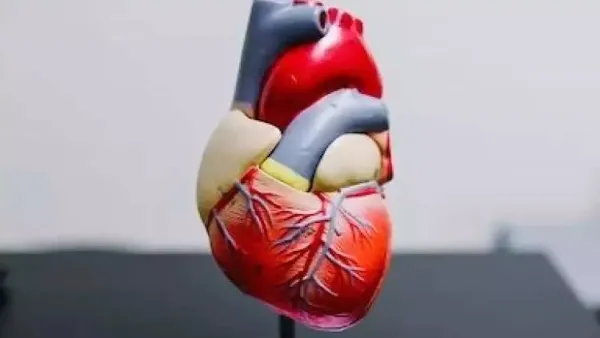
WASHINGTON Washington: A research team from the Sarwar Heart Center at the University of Arizona College of Medicine-Tucson found that a subgroup of artificial heart patients can regenerate heart muscle, which could lead to the treatment and perhaps someday cure of heart failure. Opens up possibilities for new approaches. The results of research co-led by a physician-scientist were published in the journal Circulation.
Comparing skeletal muscle repair to that of the heart muscle, Hesham Sadek, MD, PhD, director of the Sarwar Heart Center and chief of the division of cardiology in the Department of Medicine at the University of Arizona College of Medicine-Tucson, said that when the heart muscle If heart muscle doesn't grow back when injured, “we don't have anything to reverse the loss of heart muscle.” Sadek plans to investigate whether heart muscle can be regenerated. Led collaboration among international experts. This study was funded through a grant by the Leduc Foundation Transatlantic Network of Excellence Program.
The project began with tissue from artificial heart patients provided by colleagues at the University of Utah Health and School of Medicine, led by Stavros Drakos, MD, PhD, a pioneer in left ventricular assist device-mediated recovery at Karolinska Institute in Stockholm. Jonas Frisson, MD, PhD, and Olaf Bergman, MD, PhD, led teams in Sweden and Germany and their carbon dating of human heart tissue. Using an innovative method, it was determined whether these samples contained newly formed cells.
The investigators found that patients with artificial hearts regenerated muscle cells at a rate more than six times that of healthy hearts. “This is the strongest evidence yet that human heart muscle cells can actually regenerate, which “Really exciting, because it reinforces the notion that the human heart has an inherent capacity to regenerate,” Sadek said.
Earlier, Sadek published a paper in Science showing that heart muscle cells actively divide in the womb, but shortly after birth they stop dividing and release their energy into the body. They spend all their time pumping blood without stopping; they don't get time to rest.
In 2014, he published evidence of cell division in patients with artificial hearts, indicating that their heart muscle cells may be regenerating. “The pump pushes blood into the aorta, bypassing the heart,” he said. “The heart is essentially resting.” Sadek's previous studies indicated that this rest could be beneficial to heart muscle cells, but he needed to design an experiment to determine whether the artificial heart The patients were actually regenerating muscle. “Irrefutable evidence of heart muscle regeneration in humans has never been shown before,” he said. “This study provided direct evidence.” However, Sadek wants to find out why only 25 percent of patients responded to muscle regeneration.
“It is not clear why it works for some patients and not others, but it is very clear that in the patients that it does, it has the ability to regenerate heart muscle,” they wrote.